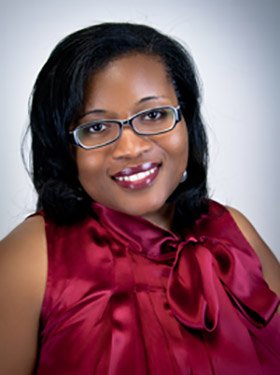This month observes the annual celebration of women’s history. The first Presidential Proclamation acknowledging women’s history was made by President Jimmy Carter in February 1980, pronouncing the week of March 8th as National Women’s History Week. Within six years, 14 states were beyond celebrating women one week of the month and had professed March in its entirety to commemorate women’s history. By 1987, Congress declared March as National Women’s History Month, henceforth honoring the achievements of American women (MacGregor, n.d.).
The achievements of American women have historically and more recently been wanting relative to inclusion of all women. For instance, the 1970s women’s movement activities that sought to emancipate women spoke primarily to the needs and concerns of middle-class White women, not to those of most Black women. However, the antecedents to the 1970s and 1980s women’s rights movements are only repeats of the late 19th century and early 20th century tensions with the women’s suffrage movement that marginalized Black American women, as they faced racism and sexism from White suffragists relative to efforts to withhold their right to vote and place in the labor market. There was an “anti-Black women’s suffrage movement”; for Black women the ratification of the 19th Amendment did not result in their right to vote, with the majority only able to exercise voting rights in the 1960s (Buechler, 1990; Lerner, 1993; Terborg-Penn, 1998).
Notably, the increased participation of Black women in the public workplace was opposed by White women in part because, during and after slavery, Black women raised White children and kept White homes intact while dealing with their own family responsibilities. Lerner (1992) noted,
Black women have always been more conscious of and more handicapped by race oppression than by sex oppression. They have been subject to all the restrictions against Blacks and those against women. In no area of life have they ever been permitted to attain higher levels of status than white women. (p. xxii)
It is not surprising, then, that American Black women’s welfare, concerns, or lack of participation in society were not a consideration in the evolution of early feminist thought. Subsequently, it is not surprising that the Women’s March in Washington on January 21, 2017, was met with mixed feelings from women of color, particularly Black women, given the long-standing strains regarding civil rights for Blacks alongside White female feminist movements in which White suffragists did not seek to advance or give priority to rights for Black people.
While the recent Women’s March showed intersections of participation, inclusion of diverse voices felt reminiscent of the afterthought that is all too familiar and reflective of solidarity via interest convergence. The Women’s March is but one example of the failure to address intersectionality in the oppression of women. Within the sphere of higher education, Black women hold a unique position as members of two groups that have been treated in a peripheral manner by postsecondary education (Moses, 1989). Membership in both marginalized groups often makes Black women invisible in colleges and universities (Zamani, 2003).
Recently, Dr. Lori Patton Davis visited the University of Illinois at Urbana-Champaign as a speaker in the College of Education Dean’s Distinguished Diversity Lecture Series co-sponsored by OCCRL and the Office of the Provost. The title of her talk was “Hidden in Plain Sight: The Black Women’s Blueprint for Institutional Transformation in Higher Education.” Lori Patton Davis, Ph.D., Professor of Higher Education at Indiana University and President-elect of the Association for the Study of Higher Education, is a well-regarded scholar best known for her research on university cultural centers, the impact of institutional contexts on student development, and the experiences of undergraduate Black women. Dr. Patton Davis discussed how feminist discourse often overlooks the various iterations of womanhood though making feminism universal and based on experiences from mainstream narratives of White women. By contrast, the conceptual underpinnings of Black feminism serve as a leading theoretical lens for understanding the intersections of race, gender, class, ability, sexuality, and citizenship for Black females (Collins, 2002; Evans-Winters, 2013). Patton Davis highlighted the multifaceted ways in which Black women are stereotypically viewed as tropes from the Mammy and Jezebel to the Matriarch, among others.
Despite their high achievement, Black female collegians and academics routinely face racism, sexism, and have their ways of knowing devalued, and their intersectional selves dismissed. Dr. Patton Davis delivered an engaging lecture that is a must see for anyone interested in diversity, equity, intersectionality, and the utilities of critical theories for examination of the interconnectedness of social identities shaping the realities Black women on and off campus.
References
- Buechler, S. M. (1990). Women's movements in the United States: Woman suffrage, equal rights, and beyond. New Brunswick, New Jersey: Rutgers University Press.
- Collins, P. H. (2002). Black feminist thought: Knowledge, consciousness, and the politics of empowerment. New York: Routledge.
- Evans-Winters, V. E. (2013). Critical race theory and African womanism: Theorizing black girls’ education at the local and global levels. In E. M. Zamani-Gallaher & V. C. Polite (Eds.). African American Females: Addressing Challenges and Nurturing the Future (pp. 235-256). Lansing, MI: Michigan State University Press.
- Lerner, G. (1992). Black women in white America: A documentary history. New York: Vintage Books.
- Lerner, G. (1993). The creation of feminist consciousness: From the middle ages to 1870. New York: Oxford University Press.
- MacGregor, M. M. (n.d.). Why is March national women’s history month? Santa Rosa, CA: National Women's History Project.
- Moses, Y. T. (1989). Black women in academe: Issues and strategies. Washington, DC: Project on the Status and Education of Women, Association of American Colleges.
- Terborg-Penn, R. (1998). African American women in the struggle for the vote, 1850-1920. Bloomington: Indiana University Press.
- Zamani, E. M. (2003). African American women in higher education. New Directions for Student Services, 104, 5-18.
